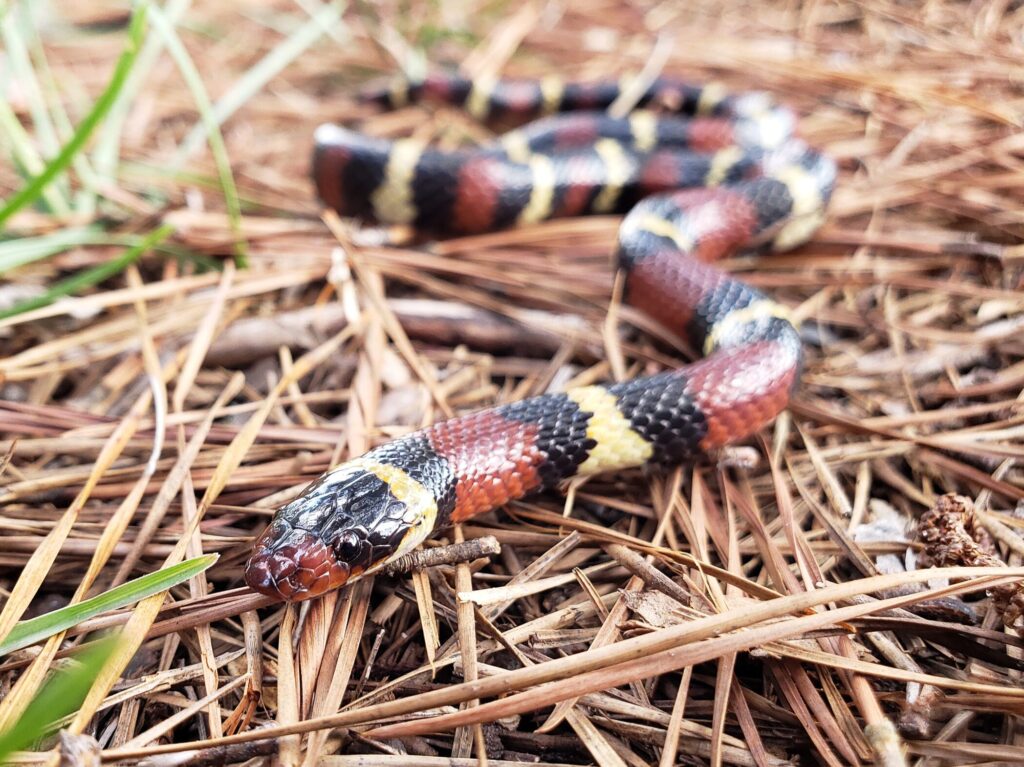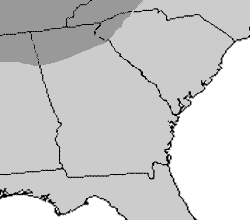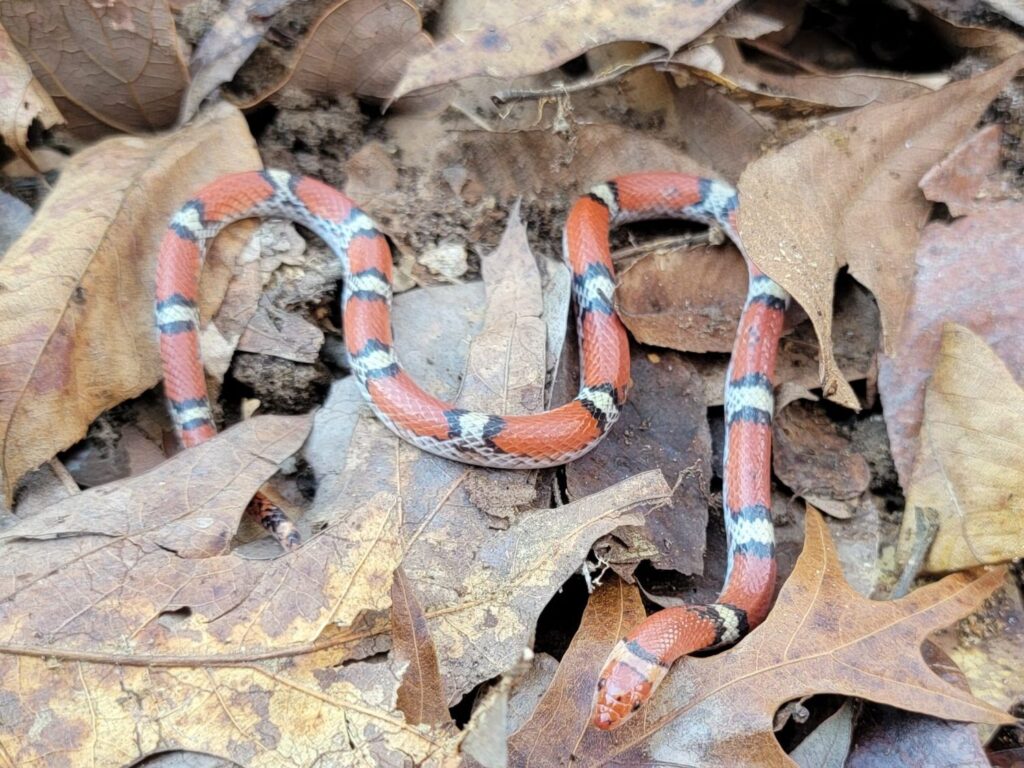Scarlet Kingsnake (Lampropeltis elapsoides)
Scarlet Kingsnake (Lampropeltis elapsoides)


Range Map:
Light area = Scarlet Kingsnake (L. elapsoides)
Dark area = Eastern Milk snake (L. triangulum)
Description: A small, brightly colored kingsnake with alternating bands of red, black, and yellow (or whitish). The key identification feature is that red bands touch black bands (whereas in the venomous Eastern coral snake, Micrurus fulvius, red touches yellow). Often confused with the Scarlet snake (Cemophora coccinea), which has bands that do not extend across the belly. Smooth scales, slender build, and typically less than 50 cm (20 in) in length.
Range and Habitat: Occurs throughout much of the southeastern United States. In Georgia, found throughout the Coastal Plain and Piedmont, but absent from the mountains, where Eastern Milk Snakes (L. triangulum) and their intergrades occur instead. Across their range, Scarlet Kingsnakes occupy a variety of habitats, including longleaf pine sandhills, hardwood forests, agricultural areas, and suburban landscapes, provided sufficient ground cover exists.
Habits: Primarily secretive and fossorial, spending most of their time underground or beneath logs, rocks, or bark. Nocturnal and most often observed on the surface at night or after heavy rains. Occasionally encountered in barns or human structures, where they are attracted by rodent prey. Diet consists mainly of lizards (particularly skinks), but also includes small snakes and rodents.
Conservation Status: Listed as Least Concern (LC) by the IUCN. Not federally protected but afforded legal protection in Georgia. Populations remain stable across much of their range.



